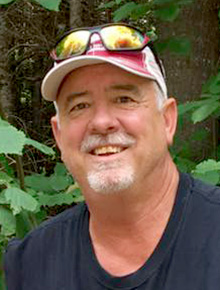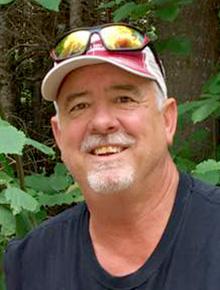
When you spend your free time in the conservation universe, there is normally very little down time between seasons.
The ice fishing season closed at the end of February, and in a short window of about 30 days I am heading into the heart of fire season. When it comes to managing grassland habitats, there is nothing else that can have such a positive impact as fire.
Before human settlement, the great plains were vast seas of native grass species that often grew to 8 feet tall. These prairie ecosystems were under constant natural management. Lightning would start prairie fires and they could burn tens of thousands of acres in a single event.
I can only imagine a fire that could literally burn across much of an entire state being stopped only by natural rivers or streams. Fires remove the duff that accumulates from seasons of growing and dying.
Then you add in the millions of buffalo that roamed these same prairies and their hooves would beat up the ground and integrate years of seed production into the soil to germinate the following spring.
The American Indians were the first utilizers of fire as a management tool. They would burn prairies, and the results that followed would be that buffalo herds would seek out these areas for the fresh green sprouts of grasses and forbs that would be present following the fire.
Between buffalo and natural fire, the ecosystems of both tall grass and short grass prairies were maintained.
Then humans come along and the result was the loss of over 95 percent of all of those native grassland acres in Minnesota and across the Midwest.
The trend continues today with losses of grassland equal to the size of the state of Kansas even over just the past 30 years. Native grassland ecosystems are the most endangered ecosystem in the entire world today.
Add in the fact that humans introduced many grass species that were never native to North America and we have yet another challenge to managing the ever-precious native prairies that remain.
With the introduction of non-native smooth brome a few hundred years ago, there would be no way for our remaining remnant native prairies to survive without human management.
We now use fire and livestock grazing on native prairies to do our best to mimic the natural process that existed before we arrived. Invasive cool season grasses like smooth brome would ultimately destroy native prairies if they are left unattended.
It is the first grass to sprout in the spring, and without any other water or light competition from native warm season grass that doesn’t take off until soil temperatures reach about 70 degrees, they dominate and choke out the desirable native grasses and forbs in only a few years.
It you successfully planted a restored native prairie and did nothing with it, in 15 years you would hardly be able to tell those desirable plants ever existed.
Management by fire in April and May sets back the undesirable cool season species, and while they are recovering from the fire, the warm season natives get a jump start on them.
This jump start is achieved in two ways.
First, after the fire the ground is black. This absorbs sunlight and the soil heats up much faster. This allows those desirable warm season grasses a growing season that is up to 60 days longer than in the absence of fire.
The second benefit is that as the burned off cool season grasses are recovering, there is reduced moisture competition and no sunlight competition.
All of this results in the reduction of undesirable cool season species and the robust improvement in density and vitality of native species.
I went to one of my very first prescribed fires and we used a wet depression as a fire break. It was an uneven line that weaved about a half mile. The fire went off like it should.
What blew me away and has been forever scorched in my mind is what I saw the following fall.
The burned area had grasses and flowers 6 feet tall. The unburned area had almost all short undesirable cool season species that were only 12 inches tall.
You could easily see the uneven line weave across this prairie, and anyone, even if they knew nothing about native prairies, could tell what had been burned and what had not.
From that moment on, I was hooked on prairie grassland management and fire was now my friend.
Scott Rall, Worthington, is a habitat conservationist, avid hunting and fishing enthusiast and is president of Nobles County Pheasants Forever. He can be reached at scottarall@gmail.com. or on Twitter @habitat champion.



